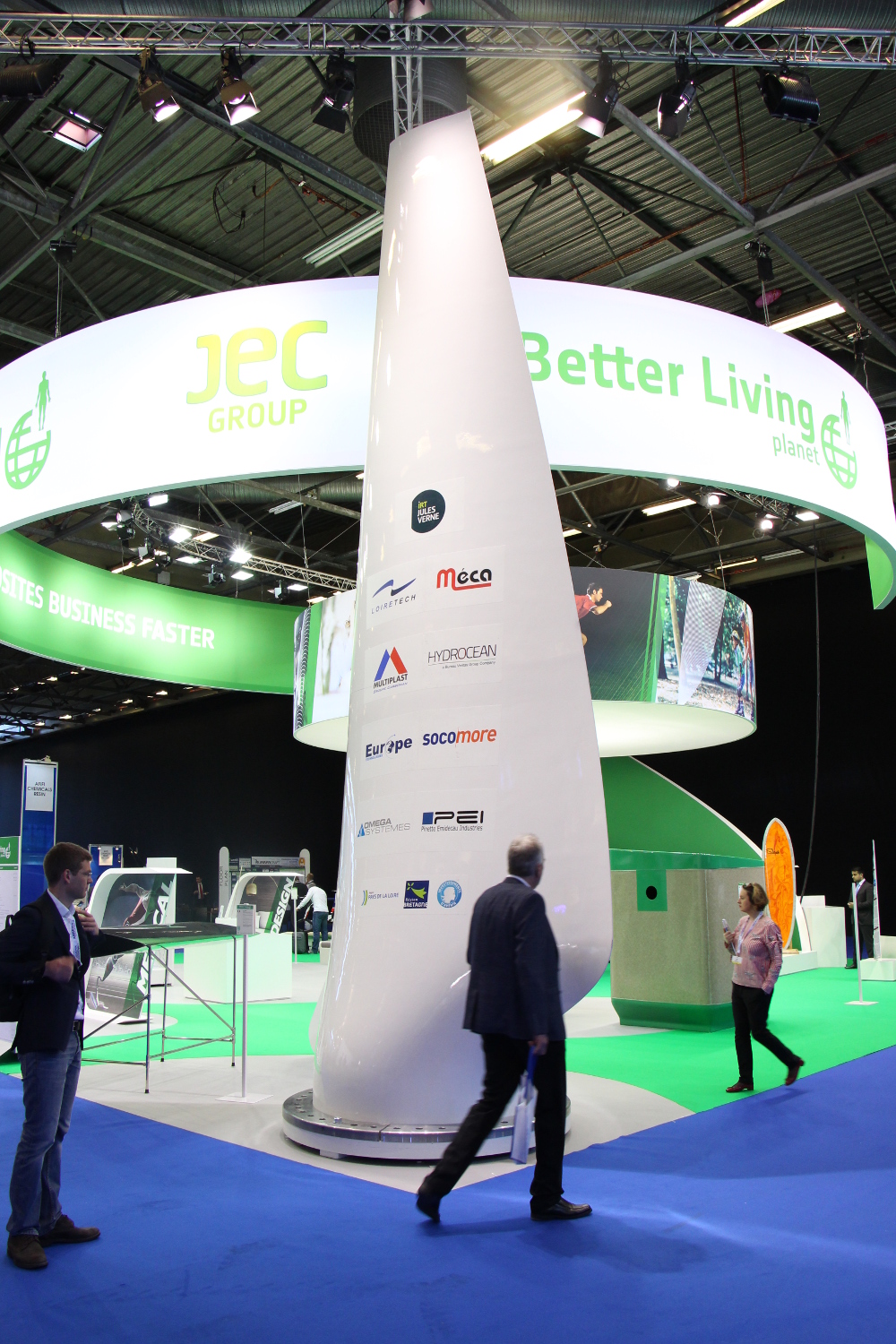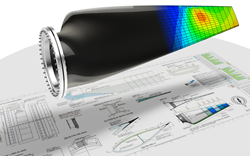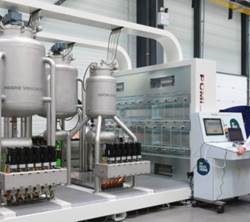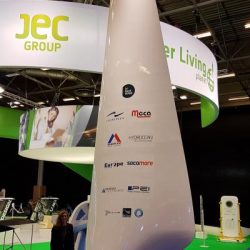
Background
The Hobit project aimed to provide to the marine renewable energy market an innovative composite process for the manufacture of a hollow tidal turbine blade.
In this context IRT Jules Verne and its partners have developed a low-cost, high-speed manufacturing process of large composite hollow blades in a single piece.
Project partners:

Scientific advances and innovation
- Development of mechanical and hydrodynamic reliability modelling tools for marine structures.
- Development of a hollow composite sheet planing method to automate preforming for variable thicknesses from 10 to 60 mm.
- Development of an innovative manufacturing of high volume and low cost process as innovative tools equipped with heating means and sensors.
- Targeted production rate: 1000 pieces / year.
- Realization of 1/7, 1/3 and full scale truncated hollow blades in one shot with integrated stiffener.
- Development of a resistant and durable coating with severe conditions.
Expected technical and economic impact
The development of this solution is part of a need for industrial application whose annual production potential is of the order of several thousand pieces.
The manufacturing cost of the pale is low if the technique is developed for a large series.
The blade is made in one piece getting rid of bonded joint and so eliminates a recurring weakness of this type of part and thus allows to consider reduced maintenance costs.
Key project milestones
- March 2015 - Beginning of the project
- February 2017 - End of the project
Demonstrator
A prototype scale 1 of 2.2 tons, 7 m height and 2.5 m width was realized.
Results
- Development of an innovative one-shot process for hollow parts
- Promising economic and technical analysis (RTM process): Weight : – 20%/Cycle time : – 25 %
The prototype has validated the process which notably eliminates the assembly and gluing steps for the production of the part and makes it possible to co-mold metal inserts (flanges). It should allow the production of blades in series up to 1000 pieces / year at low cost to meet the needs of the marine renewable energy market.








